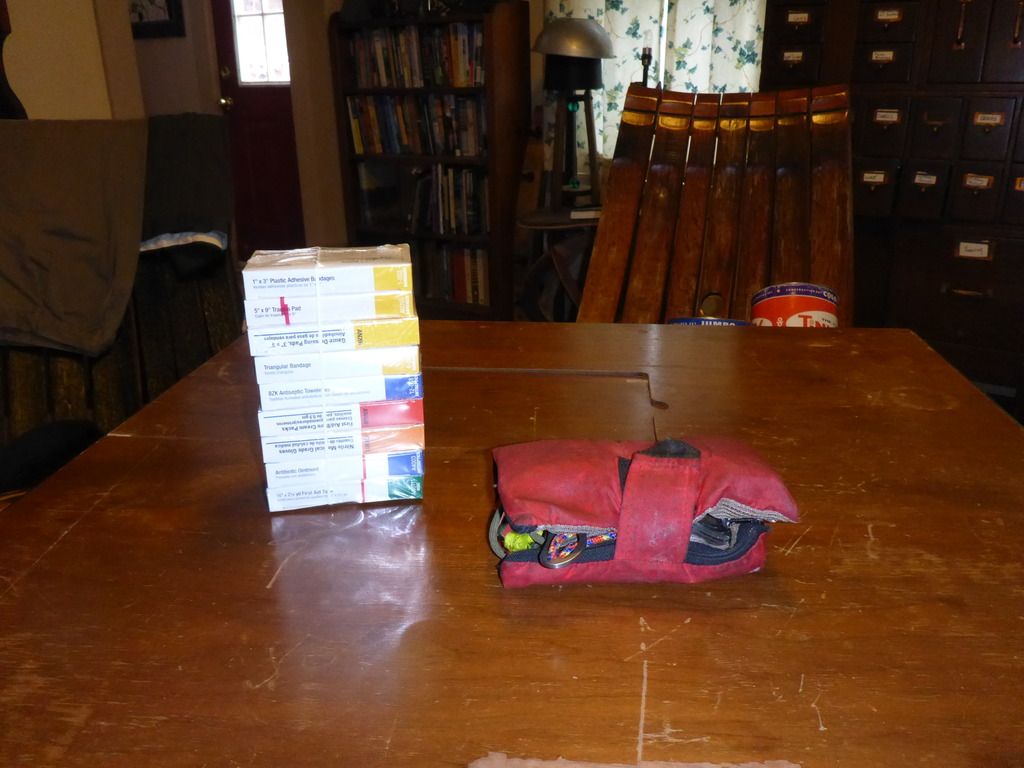I took a look at what I had in my 1st aid kit a month ago and found that most of the outer packaging on bandaids and Gauze pads were deteriorated and no clue as to how old the creams were. I started a search for a new kit. Most of the kits had too many miscellaneous items or in a container I didn't want.
Finally I stumbled on 1st Aid Refill Kits. I bought 10 unit refill from Global Industrial. This also let me use my old kit that I bought in the 80's and it was cheap.
http://www.globalindustrial.com/p/s...rst-aid-kit-refill-for-10-unit-first-aid-kits

The kit cleaned out and the creams in the upper right were trashed.

I used most of the refill except the bandaids, 3x3 pads, (both better quality on hand) 5x9 Trauma Pad, and after the pic decided to not use the triangular Bandage. I put 4 of each of the items in the kit and bag up the rest.

Finally I stumbled on 1st Aid Refill Kits. I bought 10 unit refill from Global Industrial. This also let me use my old kit that I bought in the 80's and it was cheap.
http://www.globalindustrial.com/p/s...rst-aid-kit-refill-for-10-unit-first-aid-kits

The kit cleaned out and the creams in the upper right were trashed.

I used most of the refill except the bandaids, 3x3 pads, (both better quality on hand) 5x9 Trauma Pad, and after the pic decided to not use the triangular Bandage. I put 4 of each of the items in the kit and bag up the rest.

